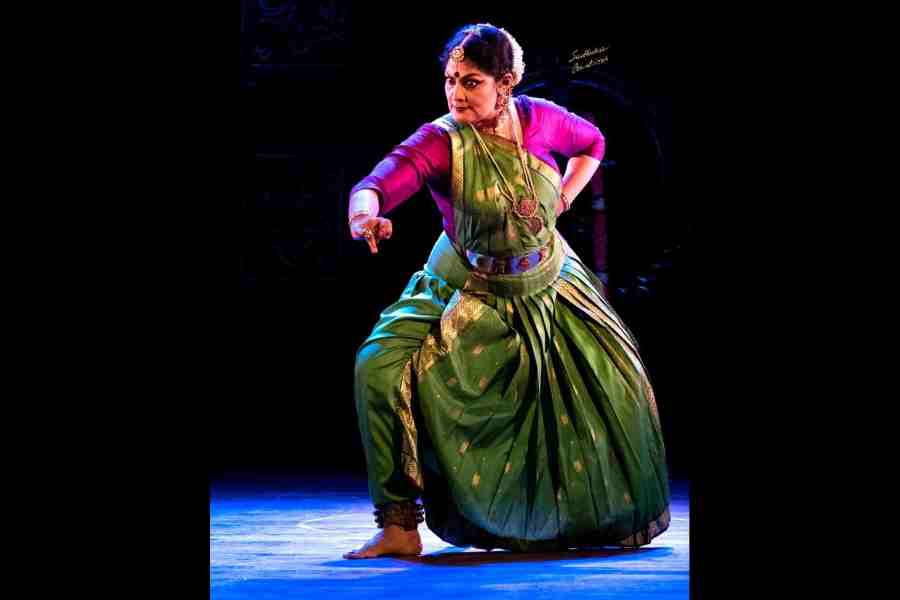Art forms are custodians of traditions and myths, passed down through generations by artists who determine their course. The Padma Shri-awardee and Bharatanatyam doyen, Geeta Chandran, has been a staunch proponent of bridging the chasm between the classical and the contemporary. Her recent powerful presentation in Calcutta, Margam (organised by Udok Performing Arts at Gyan Manch), bore the signature of a veteran artist steadfast in her adherence to classical roots while incorporating fresh perspectives of Bharatanatyam’s evolving vocabulary.
Margam includes the complete set of Bharatnatyam’s repertoire, from Alarippu to Mangalam. Chandran’s Margam commenced with a recital by her pupil, Moumita Chatterjee. A Surdas composition choreographed by Chandran, “Avani ka pad”, which illustrates the hues of Vrindavan as Krishna and Balram return from grazing cattle, was performed deftly by Chatterjee. The performance demonstrated Chandran’s ability to assimilate North Indian aesthetics into a heavily codified dance form from the South.
This was followed by Chandran mounting a more than one-and-a-half-hour-long grand spectacle of three pieces from her expansive repertoire that evoked the powerful imagery of Shiva. Chandran drew in the audience with her elucidation of the lyrics, etching out the changing dynamics of the nayika’s relationship with Shiva across the three pieces. In Chokkanathar Kavuthwam, Chandran embodied a nayika who describes the myth of Shiva by invoking aspects of his identity, such as Ishana, Dakshinamurthy, Kalamari, taken from classical, folk and vernacular traditions; in Kharaharapriya Varnam, Chandran personified the Virahotkanthita of the Ashtanayikas, tormented by the arrows of Cupid and waiting for her union with Shiva.
The central piece of the evening, the varnam, was laced with Chandran’s exposition of the shringar rasa as she deftly unwrapped the dialogue between the bold nayika and her sakhi with her intricate footwork and persuasive abhinaya. The object of desire, Shiva, is then ridiculed in Ninda Stuti, where the nayika highlights all of Shiva’s imperfections to Kamdev. Chandran portrayed a tapestry of emotions juxtaposing style, humour and innovation, confirming her adherence to the purity of Bharatanatyam.










